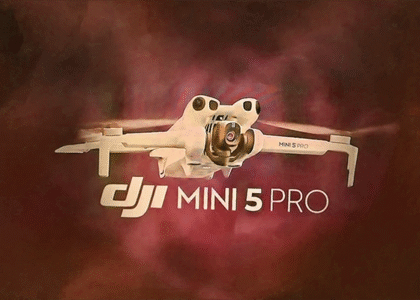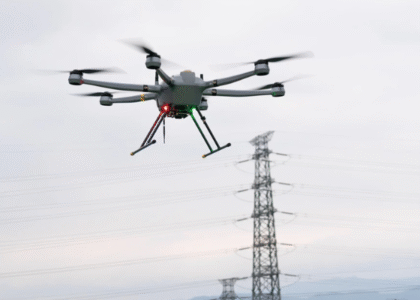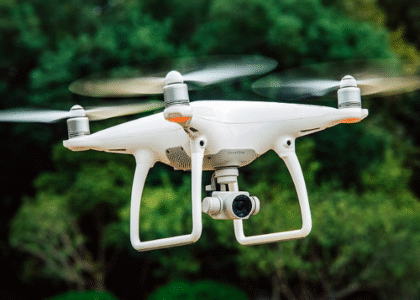Dazzling Skies Ahead, the definitive Independence Day guide to the DJI Mini 4 Pro, DJI Air 3S, and DJI Mavic 4 Pro. Find the right drone for your 15th August light shows, event filming, or social content, with specs, tradeoffs, safety and buying guidance.
Have you ever filmed an Independence Day moment only to find the footage shaky, under-exposed, or simply not cinematic enough to share? For many creators and event planners the challenge is the same: how to capture the scale and emotion of 15th August from the best possible vantage without overcomplicating logistics or breaking regulations.
What single aerial frame would best capture a nation’s pride, the flutter of the tricolour, the sweep of a parade, and the crowd’s collective breath as the sky darkens into the first salute?
That question defines the technical and operational challenge of 15th August missions: achieving consistent exposure and colour fidelity in low light, maintaining flight endurance across repeated sorties, and executing repeatable, safe flight paths in crowded urban environments. Event cinematography at this scale is not an exercise in novelty, it demands engineered reliability, predictable sensor performance, and a logistics plan that accounts for batteries, encoders, and emergency contingencies.
Against that operational backdrop, platform selection becomes a systems decision rather than a simple purchase: which airframe and sensor suite provide usable dynamic range at twilight, which controller-and-encoder combos sustain a broadcast-quality uplink, and which safety architecture (obstacle sensing, return-to-home redundancy, geofencing) minimizes risk over populated assemblies. These considerations are particularly acute in India’s urban theatres, where regulatory overlays and spectrum constraints intersect with public-safety priorities.
Below is a tightly focused technical assessment of three platforms, the DJI Mini 4 Pro, DJI Air 3S, and DJI Mavic 4 Pro evaluated on imaging performance, endurance, operational readiness, and practical system integration for Independence Day deployments.
1. Why these three drones?
Independence Day drone use cases typically fall into three buckets:
- Personal / social creators (backyard captures, family events, Reels): value portability, ease of use, and no-registration convenience.
- Community / semi-pro events (local clubs, nonprofit light shows): need reliable flight time, safety features, and better low-light performance.
- Professional coverage & cinematic displays (commercial event filming, advanced aerial cinematography): require best-in-class sensors, extended endurance, and robust obstacle avoidance.
The DJI Mini 4 Pro, Air 3S, and Mavic 4 Pro span this spectrum, making them natural top-3 candidates for 15th August applications.
2. How to choose?
When selecting a drone for Independence Day, weigh the following:
Image quality & low-light performance
Night or twilight captures (parade lighting, dawn flyovers) demand large sensors, good dynamic range and efficient codecs. The Mavic 4 Pro leads on sensor capability, Air 3S compromises slightly for weight and price, Mini 4 Pro delivers excellent video for its class but naturally lags in extreme low light. See product sections below for sensor specs.
Flight time & operational tempo
Longer flight time reduces battery swaps during an event. The Air 3S and Mavic 4 Pro offer extended endurance for sustained event coverage; the Mini 4 Pro is optimised for portability, with shorter sortie lengths but fast handling and quick setup. We recommend planning battery logistics (spares, charging bank) for any event longer than 20 minutes.
Safety systems & obstacle sensing
For crowded events, omnidirectional sensing and robust obstacle avoidance are essential. All three DJI models include advanced sensors, but the flagship Mavic 4 Pro provides the most sophisticated system for complex urban environments, this reduces risk during low-altitude, close-proximity shots.
Weight, registration & portability
A practical advantage in India: sub-250-gram drones do not require DGCA registration. The Mini 4 Pro sits under that threshold, making it attractive for casual users.
Cost vs. capability
Budget sets the boundaries: Mini 4 Pro is the most affordable of the three, Air 3S sits in the mid-tier, and Mavic 4 Pro targets professionals prepared to invest in the best imaging hardware.
3. DJI Mini 4 Pro – The portable champ for social creators
The DJI Mini 4 Pro is the modern ultralight: highly portable, easy to fly, and optimized for creators who prioritize mobility and simplicity. For many individuals and small community organisers who want attractive Independence Day footage without registration overhead or complex setup, it is the pragmatic choice.
Key specifications
- Weight: ~249 g (keeps it in the ‘no DGCA registration’ band).
- Camera: 4K/60fps HDR capability; intelligent exposure modes for twilight.
- Flight time: Typically 30 to 40 minutes per battery in ideal conditions (real-world depends on payload and wind).
- Sensors: 360° obstacle sensing in compact form.
- Portability: Foldable, small-form factor; easy to carry to local events.
Strengths for Independence Day
- Regulation-friendly for casual users: Lower legal friction for small, private shows (still follow local no-fly rules).
- Fast setup and minimal crew: One person can manage flights, quick battery swaps.
- Good social footage: Vertical/portrait and cinematic modes for Reels and short clips.
Limitations
- Low-light ceiling: Effective twilight performance, but cinematographers will notice noise at high ISO compared to larger sensors.
- Endurance for big shows: For organized, choreographed light shows (which require many coordinated flights), higher-end platforms or dedicated light-show systems are preferable.
4. DJI Air 3S – The flexible all-rounder for community & semi-pro events
The DJI Air 3S is the middle path: longer endurance, better optics and flight stability than mini models, yet more portable and cost-effective than the flagship Mavic 4 Pro. It’s aimed at content creators who need cinematic mixes and event planners who run community shows or park-level displays.
Key specifications
- Camera: Dual-camera system (wide + tele/zoom), enabling composition flexibility without swapping drones.
- Flight time: ~40 to 46 minutes in optimal conditions (varies by payload and wind).
- Safety: Omnidirectional sensing and improved obstacle avoidance over entry models.
- Operational profile: Good balance between image quality and field manageability.
Strengths for Independence Day
- Composition flexibility: Wide scenes for parades and telephoto detail shots for dignitaries or floats.
- Endurance for event coverage: Longer sortie lengths reduce battery management hassles for medium-sized events.
- Run-and-gun to scripted shots: Great for a single operator switching between live coverage and planned cinematic passes.
Limitations
- Not the highest-end sensor: While excellent for most uses, it’s not a substitute for the Mavic 4 Pro in pure cinematic quality or very low-light performance.
5. DJI Mavic 4 Pro – The cinematic flagship for professional coverage
The DJI Mavic 4 Pro is DJI’s cinematic workhorse in this trio. With a large sensor, advanced processing and enterprise-grade obstacle avoidance, it is the go-to for event production teams, broadcasters, and professional aerial cinematographers covering large Independence Day spectacles.
Key specifications
- Sensor & optics: High-resolution Hasselblad-tuned sensor options (exceptional dynamic range and low-light headroom).
- Video: Up to 6K capture, advanced codecs for post-production flexibility.
- Flight time: Extended endurance (50+ minutes nominal), depends on configuration.
- Sensing: Advanced LiDAR/visual-inertial sensing and redundant systems for complex urban operations
Strengths for Independence Day
- Best image quality: Superior detail for broadcast feeds and large-screen displays.
- Low-light resilience: Captures dusk and early evening lighting with less noise and more usable dynamic range.
- Enterprise reliability: Redundant systems and advanced obstacle avoidance reduce risks at crowded events.
Limitations
- Cost & crew needs: Higher acquisition cost and requires a trained operator plus logistics (batteries, spares, possibly permits).
- Operational complexity for novices: Not ideal for casual users without prior flight experience.
6. Practical event planning: How to use these drones on 15th August
Below is a practical, operational playbook for using any of the three drones at an Independence Day event.
Pre-event: permissions, safety & flight plans
- Permissions: Obtain necessary approvals via India’s Digital Sky platform (UIN/UAOP) for public events; if flying near parades or VIP zones, coordinate with police and local ATC. Lightweight private flights still require awareness of local no-fly times/areas.
- Flight plan: Pre-program grid/waypoint missions for consistent coverage; reserve manual override for dynamic shots.
- Briefings: Hold a safety briefing with ground crew, spotters and local authorities. Define exclusion zones and emergency landing points.
Equipment & battery logistics
- Batteries: Plan for 3× the minimum mission energy (1 active, 1 warming/charging, 1 emergency/backup). Cold evenings reduce battery runtime.
- Redundancy: Bring spare propellers, a backup controller and at least one spare drone if high-stakes coverage is planned.
- Connectivity: 4G/5G uplink or local RF repeaters for livestreams; ensure encrypted streams for VIP events.
Shooting strategy & creative tips
- Golden hour & blue hour: Schedule cinematic passes at sunset for dramatic silhouettes and flag backlight.
- Composition: Use wide passes for crowd/context, and telephoto or zoom for speaker/flag close-ups (Air 3S helps here).
- Light shows: For choreographed light displays, consumer drones are not substitutes for professional multi-UAV show systems, coordinate with certified show providers for synchronized swarms.
Post-event: data handling & publishing
- Backup: Immediately offload footage to at least two storage locations.
- Color & exposure: For night footage, employ noise-reduction and exposure bracketing to preserve highlight detail.
- Rights & releases: Secure release forms for filmed individuals when publishing commercial footage.
7. Comparison Chart
Use this chart to make a quick, operational decision for your Independence Day activity.
| Feature / Metric | DJI Mini 4 Pro | DJI Air 3S | DJI Mavic 4 Pro |
| Primary use | Backyard/social creators, quick grabs | Community events, hybrid creator use | Professional event production, broadcast |
| Sensor / Camera | 1-inch class (4K/60 HDR), excellent for class | Dual camera (wide + zoom), cinematic flexibility | Large format (Hasselblad/100MP option), 6K/60, superior DR |
| Max video | 4K/60 HDR | 5.4K / 4K options depending on config | 6K/60, professional codecs |
| Flight time (nominal) | 30 to 40 min | 40 to 46 min | ~50 to 55+ min |
| Obstacle sensing | 360° (consumer-grade) | Omnidirectional | Advanced 360° LiDAR / vision + redundancy |
| Wind resistance | Good for light winds | Very good | Excellent – enterprise-level |
| Portability | Ultra-compact, foldable | Portable, suitcase friendly | Larger, needs case, pro kit |
| Registration | Often <250 g class variants reduce registration friction, confirm SKU & firmware | Requires registration for public events | Requires registration + approvals for public events |
| Live streaming | Possible via 4G/5G tether/encoder | Strong live capabilities | Best for broadcast with professional encoders |
| Best for | Quick social reels, small-scale captures | Community events, mixed creative workflows | Broadcast, cinematic captures, large public events |
| Recommended crew | Solo operator | 1 operator + 1 spotter | 1 pilot + 1 observer + production support |
8. Accessories, software and services that make the difference
For an Independence Day shoot, the drone is only one part of the system. Below are the accessories, software, and services that materially improve capture quality, safety, and delivery.
Power & Logistics
- Battery strategy: Plan 3× battery sets per aircraft for continuous coverage (one active, one warming/ready, one charging). Cold evenings reduce runtime, keep batteries warm in insulated pouches.
- Rapid chargers & power banks: Use multi-bank USB-C chargers (60W+ per port) and UPS-backed power to keep charging stations stable. DJI’s official charging hubs for battery balance and health.
- Transport & protection: Hard-case. Keep spare propellers, prop-guards (where crowd proximity is expected), and basic toolkit (hex drivers, zip ties, prop balancer).
Imaging & Filters
- ND filter sets: Essential at golden/blue hour for motion blur control, use a matched set per lens (ND4/8/16). This preserves cinematic shutter speeds when shooting flags or light shows.
- Lens care: Microfiber, blower bulbs, and silica gel packs for humidity control in coastal/monsoon climates.
- Gimbal clamps & transport locks: Reduce risk during transit; never power gimbal with clamp engaged.
Connectivity & Live Broadcast
- 4G/5G mobile uplink: For live feeds use a bonded 4G/5G encoder or use a reliable mobile broadband operator with dedicated SIM data plans. Consider a small 5G router (when available locally) for higher stability.
- Encoders / streamers: For professional feeds, hardware encoders (e.g., Teradek Bond or comparable devices) provide stable RTMP/RTSP streams to social platforms or broadcast centers. For lower budgets, DJI’s integrated livestream plus a smartphone as a router works for social streams.
- Redundancy: Dual-stream architectures (primary + backup cellular) reduce the risk of stream drops at crowded events.
Software & Post-Production
- Flight planning & mapping: DJI Terra, DroneDeploy or Pix4D for flight automation, orthomosaic capture and quick georeferencing if you need to map crowd flows or barriers.
- Live telemetry dashboards: Use cloud dashboards (e.g., DJI FlightHub or Propeller Aero) to visualize battery states, GPS, and no-fly zone overlays. This helps event control coordinate multiple aircraft and ground teams.
- NLE & color grading: For Mavic 4 Pro assets, use DaVinci Resolve / Adobe Premiere with ProRes/RAW workflows to recover dynamic range from low-light captures.
Safety & Crowd Management Tools
- Geofencing & virtual no-flys: Preconfigure mission limits and geofences for aircraft to prevent inadvertent entry into VIP zones.
- Spotters & comms: Two-way radios or headsets for pilot ↔ observer coordination, establish a ground safety officer to manage landing zones.
- Insurance & event cover: Obtain third-party liability insurance for public events, many Indian event organizers require it, and some venues will not grant permission without proof of cover.
Services
- Pre-event mission planning: Hire a certified operator for pre-event mapping and flight rehearsals.
- Training & drills: Quick 1-day mission rehearsals: practice landing points, emergency return trajectories, and low-light flight profiles. This reduces operator stress on D-Day.
Sealing the deal
Key takeaways:
- For casual creators and small community displays, the DJI Mini 4 Pro delivers portability and simplicity, ideal for social reels on 15th August.
- For balanced event coverage, longer flights and flexible framing, the DJI Air 3S is the optimum all-rounder.
- For professional broadcasters and large-scale cinematography, the DJI Mavic 4 Pro remains the top choice for unmatched dynamic range and low-light capability,
The sky on 15th August is both a canvas and a conversation: a place where civic pride, memory and modern technology meet. Whether your goal is to film a neighbour’s flag-hoisting, stage a community light moment, or produce a broadcast-grade Independence Day reel, there’s a drone in the trio above that fits the brief: the Mini 4 Pro for quick, feel-good captures, the Air 3S for flexible, multi-role coverage and the Mavic 4 Pro for cinematic, large-scale storytelling.
Execution is a craft: it requires the right hardware, thoughtful accessories, strong connectivity, and trained hands. That’s exactly the part where FlyandTech steps forward. We provide authorised DJI kits, mission planning support, and a Drone pilot training, everything from a friendly beginner session to enterprise prep for public events. We also supply the chargers, encoders, filters and protective cases that turn a purchase into a working, dependable system. Follow us for real-world demos and quick tips.
Limited Independence Day Offer: FlyandTech is offering up to 10% Independence Day discount on all accessories and drones.
FAQs
1. Which drone should I pick for a backyard Independence Day shoot?
Pick the DJI Mini 4 Pro for portability, ease of use, and light regulatory burden, ideal for family and small community setups.
2. Can I livestream a parade using the Air 3S or Mavic 4 Pro?
Yes, both models support efficient uplinks and long sortie times, ensure robust 4G/5G connectivity, an encoder and local event permissions.
3. Are consumer drones allowed to perform synchronized light shows?
Not safely. Large choreographed light shows require purpose-built, licensed multi-UAV show systems operated by certified providers. Consumer drones are unsuitable for synchronized public spectacles.
4. What permissions are required for a public event on 15th August?
For public displays and events, obtain UIN/UAOP and coordinate with local police/ATC well in advance. Follow Digital Sky workflows and local event protocols.







